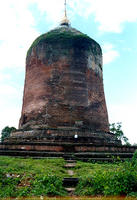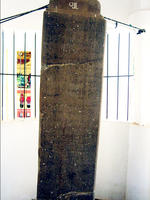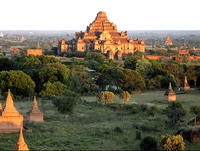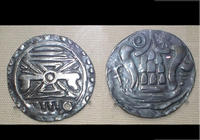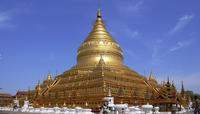You are in: Asia -> Myanmar (Burma) -> Pyu Ancient Cities, and traditional search or Image Gallery will yield results of this site only
Pyu Ancient Cities
| Site number: | 1444 |
|
| Type of site: | Cultural | |
| Date: | 200BC - 900AC | |
| Date of Inscription: | 2014 | |
| Location: | Asia, Myanmar, Pyu - Halin, Beikthano and Sri Ksetra | |
Up to 75 images are shown here. Click on each for more details or on Image Gallery for more images.
| Description: | Pyu Ancient Cities includes the remains of three brick, walled and moated cities of Halin, Beikthano and Sri Ksetra located in vast irrigated landscapes in the dry zone of the Ayeyarwady (Irrawaddy) River basin. They reflect the Pyu Kingdoms that flourished for over 1,000 years between 200 BC and AD 900. The three cities are partly excavated archaeological sites. Remains include excavated palace citadels, burial grounds and manufacture sites, as well as monumental brick Buddhist stupas, partly standing walls and water management features – some still in use – that underpinned the organized intensive agriculture. --From the description at WHC Site, where additional information is available. | |
| The Pyu city states (Burmese: ပျူ မြို့ပြ နိုင်ငံများ) were a group of city-states that existed from c. 2nd century BCE to c. mid-11th century in present-day Upper Burma (Myanmar). The city-states were founded as part of the southward migration by the Tibeto-Burman-speaking Pyu people, the earliest inhabitants of Burma of whom records are extant. The thousand-year period, often referred to as the Pyu millennium, linked the Bronze Age to the beginning of the classical states period when the Pagan Kingdom emerged in the late 9th century. The city-states—five major walled cities and several smaller towns have been excavated—were all located in the three main irrigated regions of Upper Burma: the Mu River Valley, the Kyaukse plains and Minbu region, around the confluence of the Irrawaddy and Chindwin Rivers. Part of an overland trade route between China and India, the Pyu realm gradually expanded south. Halin, founded in the 1st century AD at the northern edge of Upper Burma, was the largest and most important city until around the 7th or 8th century when it was superseded by Sri Ksetra (near modern Pyay) at the southern edge. Twice as large as Halin, Sri Ksetra was the largest and most influential Pyu center. The Pyu culture was heavily influenced by trade with India, importing Buddhism as well as other cultural, architectural and political concepts, which would have an enduring influence on the Culture of Burma and political organization. The Pyu calendar, based on the Buddhist calendar, later became the Burmese calendar. Latest scholarship, though yet not settled, suggests that the Pyu script, based on the Indian Brahmi script, may have been the source of the Mon script used to write the Burmese language. The millennium-old civilization came crashing down in the 9th century when the city-states were destroyed by repeated invasions from the Kingdom of Nanzhao. The Bamar people, who came from Nanzhao, set up a garrison town at Bagan at the confluence of the Irrawaddy and Chindwin Rivers. Pyu settlements remained in Upper Burma for the next three centuries but the Pyu gradually were absorbed into the expanding Pagan Kingdom. The Pyu language still existed until the late 12th century. By the 13th century, the Pyu had assumed the Burman ethnicity. The histories and legends of the Pyu were also incorporated to those of the Bamar. --Wikipedia. Text is available under the Creative Commons Attribution-ShareAlike License. | ||
| Source: | http://whc.unesco.org/en/list/1444 | |
| Source2: | Wikipedia (http://wikipedia.com) | |
| Reference: | 1. UNESCO World Heritage Center (http://whc.unesco.org/en/list/1444). 2. Wikipedia. | |


